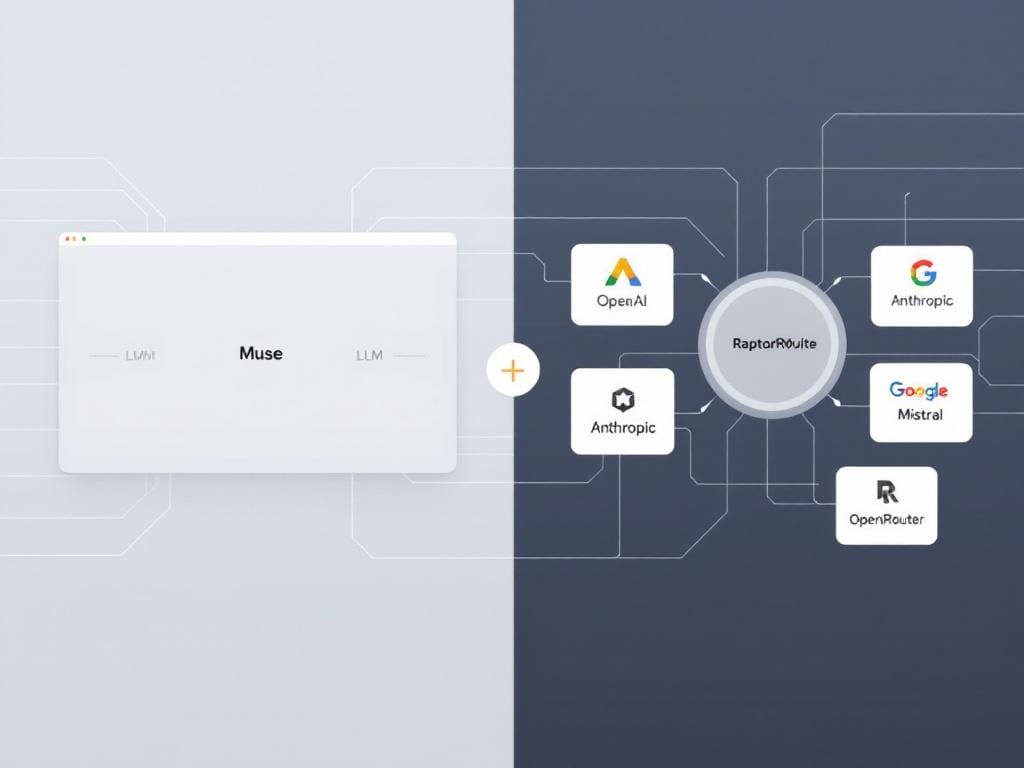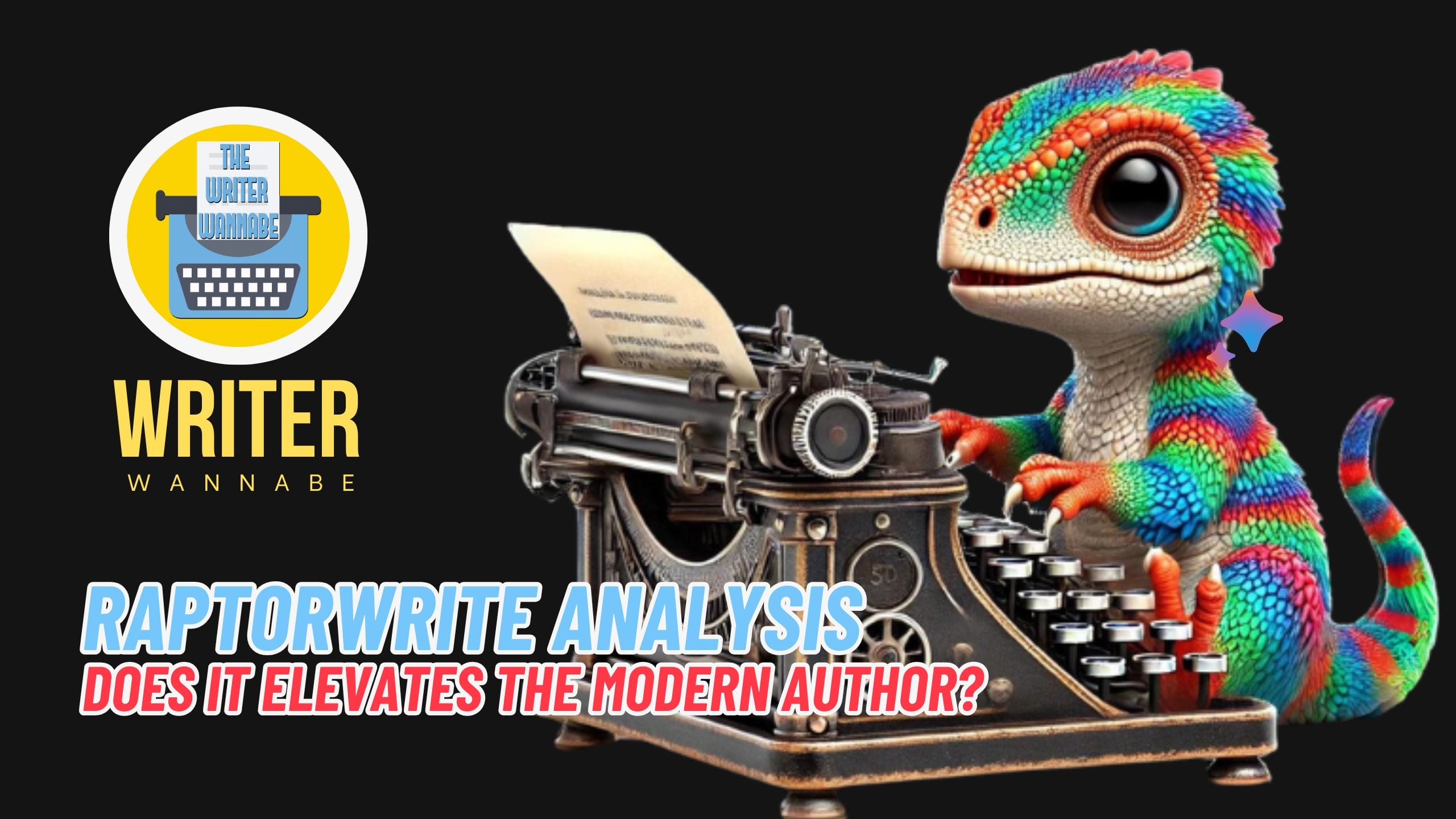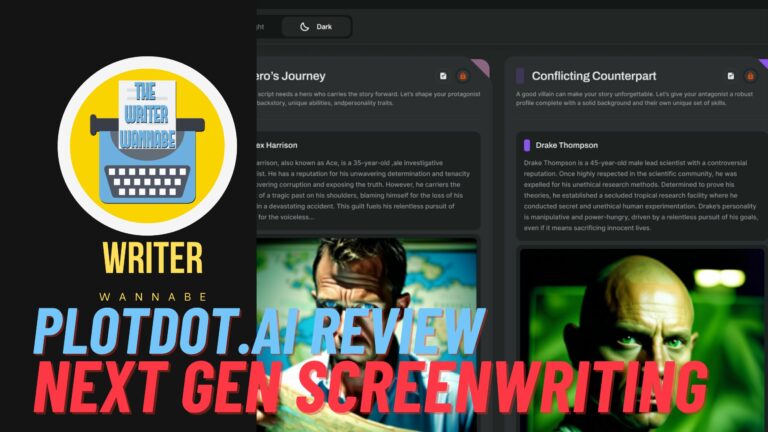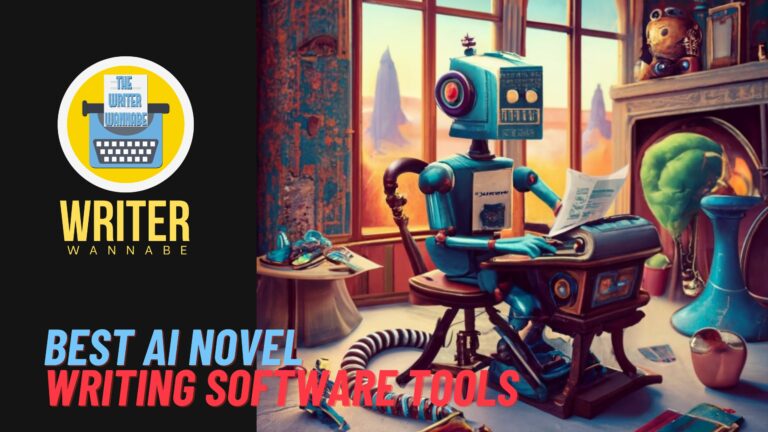RaptorWrite Analysis: Does it Elevates the Modern Author?
Embrace the Future of Fiction with AI Assistance
Key Takeaways:
- Free Accessibility: RaptorWrite offers a truly “free to try” model, breaking down financial barriers for authors new to AI writing. This makes it an ideal starting point for anyone looking to experiment with artificial intelligence in their creative process.
- Unprecedented Control & Flexibility: Unlike many proprietary AI tools, RaptorWrite provides access to a “vast library of language models” like OpenAI, Anthropic, Google, and Mistral via OpenRouter. This gives writers immense flexibility to choose the AI that best suits their specific creative needs.
- Focus on Augmentation, Not Automation: The core philosophy of RaptorWrite is to “build the creative spark, not automation”. It acts as a powerful “scaffolding” for ideas, empowering authors rather than replacing their unique voice or creative input.
- Community-First Development: Backed by the Future Fiction Academy (FFA), RaptorWrite thrives on user feedback and a “community-first” approach. This fosters a collaborative environment where writers can learn, experiment, and help shape the tool’s evolution.
- Niche-Friendly Freedom: For authors working in experimental or “NSFW” (Not Safe For Work) genres, RaptorWrite offers a distinct advantage with “fewer filtering restrictions”. This provides a creative sanctuary often missing in more mainstream AI writing platforms.
The AI Revolution for Independent Authors
Artificial intelligence is reshaping creative landscapes, and fiction writing is certainly no exception. For independent authors, AI tools can feel like a game-changer or a confusing new frontier. Enter RaptorWrite, a groundbreaking AI-powered writing application specifically designed to empower indie authors. Developed by the innovative minds at Future Fiction Academy (FFA), this platform stands out with its bold “free to try” model, aiming to democratize access to AI-assisted writing without the burden of constant subscription fees. It is truly a fresh approach.
RaptorWrite’s mission is clear: to give authors unparalleled control over their creative process. It achieves this by providing flexible access to powerful large language models (LLMs) such as OpenAI, Anthropic, Google, and Mistral, primarily through the OpenRouter service. This unique flexibility, paired with a core belief in enhancing creative spark instead of automating writing entirely, positions RaptorWrite as an invaluable “zero-cost testing ground” for creative exploration. In today’s competitive market, RaptorWrite proudly claims its place as the “Best Free Version”, making it a perfect entry point for writers just beginning their AI journey.
A Collaborative Partnership: AI as Your Co-Pilot, Not Your Replacement
The very essence of RaptorWrite lies in its philosophy of “building the creative spark, not automation”. This isn’t about replacing the author, but rather providing a dynamic “scaffolding” for creative ideas. Think of it as a highly intelligent co-pilot, helping you navigate the vast possibilities of your story. The tool empowers authors by facilitating the drafting of initial concepts, the deep exploration of characters, and the rapid generation of scenes. It does all this without the restrictive creative limitations often found with similar platforms.
This intentional design choice addresses a common worry among creative professionals: the impact of AI on originality. By positioning AI as a supportive tool, RaptorWrite attracts authors who want to maintain their creative agency. This fosters a powerful sense of partnership with technology, rather than a feeling of being replaced. Importantly, this approach sets clear expectations for users: active direction and careful refinement of the AI’s output are essential. It’s not a magic button for passive content generation; it’s a dynamic partnership.
The Roots of Innovation: Future Fiction Academy’s Vision
RaptorWrite launched in early 2024, operating “under the umbrella” of the esteemed Future Fiction Academy (FFA). FFA is an educational initiative co-founded by Leland Arra and Elizabeth Ann West, an experienced independent publishing educator. The Academy’s long-standing mission focuses on equipping fiction writers with AI-enhanced tools and providing community-driven training. Key contributors like developer Alec Sharratt and co-founder David English have played vital roles in enhancing RaptorWrite’s interface and promoting its free-to-use model, always emphasizing accessibility and experimentation.
RaptorWrite isn’t just a standalone web application; it’s also an integral part of FFA’s AI education curriculum. Completing certain courses grants users free access to the platform. This deep integration creates a mutually reinforcing relationship. The “free” nature of RaptorWrite acts as a powerful magnet, drawing in a wide user base, especially those new to AI writing. As users engage with the tool, they naturally discover FFA’s comprehensive suite of educational offerings, which include paid courses on advanced prompting, niche selection, and co-writing. This clever strategy creates a funnel where the free software drives adoption, and the educational content enhances user skills, potentially leading to enrollment in paid courses. This integrated model represents a sophisticated business strategy for a “free” product. It leverages the software to generate leads for educational services, building a loyal community of users who are both equipped with the tool and trained in its effective use. This clever approach ensures sustained engagement and potential monetization beyond the initial free offering.
RaptorWrite in Action: Core Features and How They Benefit You
RaptorWrite leverages advanced AI capabilities to support various stages of the writing process. This includes everything from initial brainstorming and detailed outlining to generating fresh text and expanding existing content. Users can seamlessly generate text, revise content, and organize their projects. It truly simplifies the rapid generation of scenes or the rewriting of text snippets in various styles.
Choose Your AI Adventure: Unrestricted Model Access
One of RaptorWrite’s most compelling features is its ability to provide access to a “vast library of language models”. This covers leading providers like OpenAI, Anthropic, Google, and Mistral. This extensive access is primarily made possible through OpenRouter, an API key aggregator that allows authors to experiment with various LLMs with “minimal friction”. Authors can even load their own preferred API keys or use FFA’s free tier to run different LLMs, with options to adjust parameters like temperature and token limits.
Unlike many proprietary AI writing tools that might lock users into a single internal AI model (like Sudowrite’s “Muse” model), RaptorWrite explicitly champions access to “multiple underlying AI providers (OpenAI, Anthropic, Google, Mistral) via OpenRouter”. This is a deliberate architectural choice with significant user benefits, including increased flexibility and a degree of future-proofing. Authors aren’t tied to the performance, pricing, or content policies of one single AI provider. They can dynamically switch between models based on which performs best for a specific creative task, offers better cost-effectiveness (if using their own API keys), or aligns with their personal preferences. This approach also democratizes access to cutting-edge AI models for independent authors who might otherwise find it cumbersome to set up individual API accounts.
Mastering the Prompt: Crafting Your AI’s Voice
The software offers robust capabilities for setting up prompts and customizing settings to align with an author’s unique writing style. To achieve optimal and precise results, users are guided to “adjust their prompts,” “provide ample context,” and “ask specific questions”. For example, it recommends breaking down complex requests, like developing a detailed “story Bible” chapter-by-chapter, to reduce “hallucinations” or inaccuracies in the AI’s generative responses. Authors can even feed their own writing samples into the AI to help it learn and maintain their distinctive voice, ensuring consistency across all generated content.
The emphasis on “adjusting prompts”, “providing context,” and “breaking down requests” suggests that RaptorWrite is not a fully automated solution. Instead, it “demands more from users’ narrative direction but rewards them with autonomy”. This deliberate design choice puts the user in charge of effectively guiding the AI. This design inherently encourages users to develop strong prompt engineering skills. The Future Fiction Academy curriculum directly complements this need, offering necessary training with courses like “Building Better Prompt Sequences” and “How to Prompt AI for Fiction Writing“. This approach cultivates a more engaged and skilled user base. By empowering authors to master prompt engineering, RaptorWrite not only improves the quality of AI-generated content within the tool but also enhances authors’ broader understanding of AI’s capabilities and limitations in creative work. It truly shifts the focus from simply using a tool to developing advanced user competency.
Project Management: Organized Chaos for Creative Flow
RaptorWrite features a “document-like interface” where individual chapters, character sheets, or outlines are organized in separate tabs. The “project bucket” model helps with flexible story development, letting users organize their narrative elements or instructions into distinct documents (for instance, dedicated sections for characters or plot outlines). Content from previous work can be manually copied and pasted into new documents. While this method might seem tedious for large volumes, it actually helps with faster loading times by segmenting content into smaller, more manageable sections.
User feedback highlights that RaptorWrite’s “simplicity” is a big plus for quick tasks and for authors new to AI. However, this very simplicity can become an “obstacle” and a “limitation” for users working on more complex, long-form projects that require advanced organizational features, like nested folders or more robust data management beyond browser memory. This reveals a clear trade-off. The simplicity that makes RaptorWrite “easy to use” and “fast” for brainstorming and short-form drafting simultaneously becomes a limitation for managing complex, long-form projects. This suggests that while RaptorWrite excels as a tool for iterative and modular writing and creative experimentation, it might not serve as a comprehensive, standalone project management solution for entire novels, from concept to completion. Authors working on large-scale projects might find it necessary to integrate RaptorWrite with more robust project management software like Scrivener.
The “Baby Raptor” Prototype: Glimpses into Tomorrow
“Baby Raptor” functions as a prototype version of RaptorWrite, serving as a testing ground for new features still in development. This prototype offers functionalities not yet integrated into the standard version, giving authors a chance to experiment with cutting-edge capabilities. Users can identify their access to Baby Raptor by the “Baby Raptor Write” presence in the URL, typically accessed through a “second horn” icon within the main application.
Notable new features introduced in Baby Raptor include:
- Prompt Preview: This feature lets users see the exact query sent to the AI, which helps refine prompts for better results.
- Percentage Comments (%%): Authors can use double percentage signs to comment on text meant only for their own reference, ensuring the AI ignores these notes during content generation.
- Continue Writing from Middle: This ability allows users to seamlessly develop narratives from an arbitrary point within their text, removing the need to start from the beginning.
- Keep All: A new function that lets users keep previous text while making edits, streamlining the revision process.
- Improved AI Models: The prototype also makes it easier to experiment with and compare results from various improved AI models.
Given its prototype status, Baby Raptor may contain bugs, and user feedback is explicitly highlighted as “essential and welcome” for its continuous development and refinement. The public availability of a prototype alongside a clear invitation for user feedback indicates an agile, community-oriented development methodology. This approach contrasts with more traditional software development cycles, where new features are often released only after extensive internal testing. This development model allows Future Fiction Academy to quickly iterate on RaptorWrite’s features, directly incorporating user needs and preferences. It builds a sense of community ownership and responsiveness, potentially leading to a more user-centered and effective tool over time, even if it means users might encounter occasional bugs in the prototype phase. This also reinforces FFA’s stated “community-driven design” ethos.
Who Benefits Most: RaptorWrite’s Ideal Users and Use Cases
RaptorWrite is explicitly designed to serve “independent authors” and “self-published authors”. It functions as a “free AI writing workspace for creative fiction” and aims to help authors “take their fiction books to the next level”. It comes highly recommended as the “Best Free Version” and is especially suited for authors who are “just starting with AI” due to its inherent simplicity and ease of use. While users familiar with the chat logic of large language models (LLMs) will adapt quickly, newcomers can greatly benefit from the narrated tutorials provided by Future Fiction Academy.
Specific Applications and Creative Scenarios
- Drafting and Brainstorming: RaptorWrite excels at drafting initial ideas, brainstorming sessions, and rapidly developing a story premise.
- Character and Scene Development: The platform makes it easy to explore and develop characters in depth, as well as quickly generate scenes.
- Rewriting and Style Experimentation: It is highly suitable for rewriting text snippets in various styles and for maintaining a consistent authorial voice by letting users provide writing samples to the AI.
- Flexible Story Development (Including Niche Genres): Its “project bucket” model supports highly flexible story development, even for NSFW (Not Safe For Work) or experimental genres. Authors working in these areas particularly appreciate the platform’s fewer filtering restrictions.
- Short-Form Drafting: Community feedback shows that RaptorWrite can outperform more feature-rich tools for brainstorming and short-form drafting tasks due to its speed and simplicity.
The repeated emphasis on “independent authors”, “creative fiction”, and crucially, the explicit support for “NSFW or experimental genres, where authors appreciate fewer filtering restrictions” points to a deliberate and effective niche segmentation strategy. This is not a general-purpose AI tool. By embracing and serving this specific segment of the author community (for example, writers of certain romance subgenres, horror, or experimental literary forms), RaptorWrite addresses a significant pain point: the content moderation and censorship often imposed by more conventional AI tools. This differentiation allows RaptorWrite to capture a loyal user base whose needs are often unmet by broader platforms, establishing a unique and valuable market position. This also aligns with FFA’s course offerings, such as “From Love to Chaos: Introduction to AI Writing without Moderation”.

Access, Pricing, and Licensing: A Community-First Approach
RaptorWrite is consistently promoted as a “FREE AI writing tool” and is recognized as the “Best Free Version” available on the market. It’s offered as “free to try via the FFA course”, and prospective users can enroll in a “FREE Introduction to AI Basics for Fiction Writers course” to get started. Authors have the option to use FFA’s free tier to run various LLMs, removing the immediate need for their own personal API keys. User testimonials confirm the tool can be “completely free” when using the included free models.
A Smart Upgrade: One-Time Cost for Advanced Features
For users seeking more advanced functionalities, such as the ability to add folders (a desired feature by some users) or integrate their personal API keys, a one-time upgrade cost of about $79 is required. This single payment unlocks the ability to “bring your own keys” for major LLM providers, including OpenAI, Anthropic, Google Gemini, and Mistral. This pricing structure stands in sharp contrast to the recurring monthly or annual subscription models prevalent among many of its direct competitors.
No Hidden Fees: A Promise to the Community
RaptorWrite’s pricing model is built upon a “community-first mission,” characterized by “no recurring fees” and a guarantee of “no pay-per-prompt surprises”. This approach deliberately moves away from traditional pay-per-token platforms and directly addresses a common user concern regarding wasted credits when AI generates irrelevant or unwanted content.
While RaptorWrite is consistently marketed as “free”, a one-time payment of $79 is needed to unlock “advanced use” features like personal API keys and folders. This is a classic freemium model, but with a crucial distinction: a one-time payment instead of recurring subscriptions. The “free” entry point significantly lowers the barrier to adoption, attracting a wide user base, especially beginners and those with limited income. The one-time fee for advanced features provides a sustainable revenue stream for development without the friction and long-term commitment of recurring subscriptions.
Furthermore, the explicit promise of “no pay-per-prompt surprises” directly tackles a major pain point for AI users (wasted credits), building trust and encouraging more uninhibited experimentation with AI. This pricing strategy is a powerful competitive advantage against subscription-based tools like Novelcrafter, Sudowrite, or ChatGPT Plus. It aligns perfectly with the “community-first” ethos by making core functionality widely accessible while monetizing advanced features in a transparent, non-recurring way. This approach can foster greater user loyalty, reduce financial anxiety for authors, and position RaptorWrite as a truly author-friendly solution.
Table 2: RaptorWrite Pricing and Access Tiers
| Tier/Access Level | Cost | Key Features/Benefits | Limitations (if any) | Target User |
|---|---|---|---|---|
| Free Tier | $0 | Basic AI writing, free FFA LLMs | No personal API keys, no folder support | Beginners, budget-conscious authors |
| Advanced/Pro Upgrade | ~$79 (one-time payment) | Personal API key integration, folder support, access to all LLMs via OpenRouter | None beyond the initial cost | Authors seeking more control, advanced organization, and model flexibility |
Strengths, Limitations, and User Insights: The Real Story
RaptorWrite is a tool with clear benefits and some understandable limitations, particularly given its focus on accessibility and its unique pricing model. Understanding these can help authors decide if it’s the right fit for their writing journey.
Key Advantages for Writers
- Cost-Free Accessibility: Its primary strength is the initial free access, making it exceptionally approachable for beginners and authors on a tight budget.
- Broad Provider Flexibility: The ability to access multiple LLMs (OpenAI, Anthropic, Google, Mistral) through OpenRouter is a significant benefit. This allows users to choose the best model for their specific tasks and avoid “vendor lock-in”.
- Speed and Simplicity: RaptorWrite earns praise for its speed-oriented design and straightforward interface. This makes it highly effective for quick scene generation, brainstorming, and short-form drafting.
- Unlimited Creative Freedom: The platform supports flexible story development, even for mature (NSFW) or experimental content, offering fewer filtering restrictions compared to many other AI tools.
- Intuitive Document-Centric Interface: Its tab-based, document-like interface makes ad-hoc organization and quick project response times easy.
- Strong Community Support: Backed by Future Fiction Academy, RaptorWrite benefits from extensive tutorials, educational resources, and a community-driven development approach.
Challenges and Limitations to Consider
- “Clunky” Interface: Some users have pointed out that the interface can feel less polished or “clunky” when compared to more sophisticated premium platforms.
- High Demand for User Direction: Its simplicity, while an advantage, also means it “demands more from users’ narrative direction”. This requires active and skillful prompt management rather than extensive automation.
- Browser Memory Reliance: One user voiced concern about the tool’s dependence on browser memory, suggesting potential issues with data loss or performance, especially for very large projects.
- Limited Advanced Features in Free Version: While the core offering is free, desirable features like dedicated folders for organization (a common user request) and personal API key integration are locked behind the one-time upgrade.
- Perceived Promotional Overlap: Some users have noticed a perceived overlap in promotional efforts between FFA’s educational academy and RaptorWrite’s endorsements. This has raised questions about marketing incentives.
- Not a Comprehensive Replacement: It’s explicitly stated that RaptorWrite is not meant to replace full-suite writing software like Scrivener or Sudowrite, nor human editors. It serves as a complementary tool.
Community Feedback and Testimonials
Positive feedback highlights RaptorWrite’s effectiveness in quickly generating premises and experimenting with different document structures. Its “completely free” nature is particularly valued by users with limited income. Users appreciate its ability to organize story elements into separate documents (e.g., for characters, outlines), its operational speed, and the impressive scope and creativity of its output, even when using free models. Its flexibility regarding terms and conditions (T&C) is also noted as a positive point.
Conversely, criticisms include the absence of a folder system, the tediousness of scrolling through numerous documents for large projects, and concerns about FFA course enrollment pricing (referring to the courses, not RaptorWrite itself) compared to competitors like Novelcrafter. A broader user debate touches on browser memory dependence and the philosophical concept of “owning” software versus “renting” services through subscriptions.
User feedback clearly shows a tension: RaptorWrite’s “simplicity” is a significant advantage for quick tasks and for authors new to AI. Yet, this same simplicity becomes an “obstacle” and a “limitation” for users involved in more complex, long-form projects that require advanced organizational features, like nested folders or more robust data management beyond browser memory. The “document-like interface” and reliance on manual content transfer contribute to RaptorWrite’s speed and ease of use for smaller, iterative tasks. However, these same design choices lead to “tedious” scrolling and the perceived lack of advanced organization for larger, multi-chapter projects.
The “free” or one-time fee model likely requires a more streamlined feature set to maintain development cost efficiency. This dynamic suggests that while RaptorWrite serves as an excellent entry point and a valuable “testing ground” for initial ideas and brainstorming, authors whose needs evolve to include extensive project management or who are scaling their writing efforts might eventually seek more comprehensive, though often paid, software solutions. Its strongest value proposition remains within the iterative, experimental, and initial drafting phases of creative writing.
RaptorWrite in the AI Writing Ecosystem: A Comparative Analysis
Understanding where RaptorWrite fits within the broader landscape of AI writing tools is crucial for authors making informed decisions. It positions itself strategically, offering a unique value proposition.
| Característica | RaptorWrite | Novelcrafter | Sudowrite |
|---|---|---|---|
| Modelo de Precios | Gratis para probar, actualización única de $79 | Suscripción mensual de $14 | Suscripción mensual de $22 |
| Acceso a Modelos de Lenguaje | Amplia biblioteca de modelos (OpenAI, Anthropic, Google, Mistral) | Múltiples APIs de IA | Modelo “Muse” propio |
| Flexibilidad | Alta, acceso a múltiples modelos a través de OpenRouter | Alta, con integración profunda de APIs | Moderada, centrado en su modelo propio |
| Facilidad de Uso | Simple y rápido, ideal para principiantes | Complejo, curva de aprendizaje más pronunciada | Alta, diseñado para ser fácil de usar |
| Características Principales | Generación rápida de escenas, desarrollo de personajes, reescritura de texto | Control absoluto sobre cada elemento, codex ultra-potente | Generación de prosa de alta calidad, interfaz fácil de usar |
| Limitaciones | Interfaz “torpe”, depende de la memoria del navegador, limitado para proyectos complejos | Coste recurrente, posible sobrecarga de características | Coste recurrente, menos flexibilidad en la elección de modelos |
| Ideal para | Autores independientes, autores que comienzan con IA, autores de géneros de nicho | Autores que buscan control y gestión de proyectos completos | Autores que buscan una experiencia de usuario fluida y prosa de alta calidad |
| Enfoque Principal | Aumentar la creatividad, no la automatización | Control y gestión de proyectos | Facilidad de uso y calidad de la prosa |
| Educación y Soporte | Integración con Future Fiction Academy, cursos y recursos educativos | Recursos educativos disponibles | Recursos educativos disponibles |
| Comunidad y Feedback | Enfoque comunitario, desarrollo impulsado por la comunidad | Menos énfasis en la comunidad | Menos énfasis en la comunidad |
| Organización de Proyectos | Modelo de “cubeta de proyectos”, pestañas para capítulos y hojas de personajes | Sistema de codex ultra-potente, gestión de proyectos completa | Interfaz fácil de usar, menos énfasis en la organización de proyectos |
The “Best Free Version” for Beginners
Kindlepreneur, a reputable source in the author community, explicitly identifies RaptorWrite as the “Best Free Version” among AI writing tools specifically for fiction. Its free access and simple design make it the recommended choice for “those just starting out with AI”. This positioning is a significant draw, especially for independent authors who often operate with limited budgets.
RaptorWrite vs. Novelcrafter: Control vs. Accessibility
Overview of Novelcrafter:
Novelcrafter is generally considered the “Best overall tool” for fiction, offering users “absolute control over every little element” of their writing process. It provides an ultra-powerful codex for comprehensive information storage (characters, lore, non-fiction research), seamless AI integration, maximum flexibility (including the ability to clone or create new prompts), and broad connectivity to various AI generation APIs (OpenRouter, LMStudios, Ollama).
Pricing:
Novelcrafter typically costs $14 per month for its Artisan tier. It often requires both a monthly subscription fee and additional pay-as-you-go pricing for AI usage.
Advantages:
Its main strengths are its comprehensive codex, deep integration with various AI APIs, and unparalleled control over the writing and project management aspects.
Disadvantages:
The primary drawbacks are the recurring monthly subscription and often additional pay-per-use costs for AI. Its versatility and extensive features can also lead to a steeper learning curve, potentially overwhelming some users.
RaptorWrite vs. Novelcrafter:
RaptorWrite’s free or one-time fee model and its emphasis on simplicity contrast sharply with Novelcrafter’s more powerful, flexible, but complex recurrent cost structure. While Novelcrafter caters to authors who desire deep control and comprehensive project management, RaptorWrite serves as a more accessible, entry-level tool for initial experimentation. If you’re a seasoned writer managing complex sagas, Novelcrafter might be your choice. But if you’re just dipping your toes into AI or prefer a straightforward approach, RaptorWrite shines.
RaptorWrite vs. Sudowrite: Simplicity vs. Polished Output
Overview of Sudowrite:
Sudowrite is renowned as the “Best for Ease of Use” in fiction writing, highly valued for its high-quality output. It offers a comprehensive suite of features for writing, revising, and brainstorming. It’s specifically designed for fiction writers and includes a custom “Muse” model known for producing natural-sounding prose.
Pricing:
The recommended mid-tier “Professional” level of Sudowrite is priced at $22 per month.
Advantages:
Sudowrite is celebrated for its user-friendly interface and its ability to generate high-quality, often beautiful prose. It provides a more guided and polished experience for content generation.
Disadvantages:
Its main disadvantage is the recurring monthly subscription fee, which can add up over time. While it’s easy to use, the focus on its proprietary models might limit the flexibility that RaptorWrite offers in terms of LLM choice.
RaptorWrite vs. Sudowrite:
RaptorWrite, with its free entry point and one-time upgrade, offers a more budget-friendly approach compared to Sudowrite’s ongoing subscription. While Sudowrite prioritizes a seamless user experience and highly polished output with its custom models, RaptorWrite gives authors the freedom to experiment with a wider range of underlying LLMs through OpenRouter. For writers who value experimenting with different AI “brains” and prefer a more hands-on, customizable approach to prompting, RaptorWrite could be more appealing. Sudowrite is for those who want a streamlined, high-quality experience without much tweaking, while RaptorWrite is for the tinkerers and explorers.

Real-World Impact: Case Stories from the Writing Trenches
To truly grasp RaptorWrite’s impact, let’s explore how different types of writers might leverage its unique strengths.
Case Story 1: The Budget-Conscious Beginner – Maya’s First Novel
Maya had a burning desire to write a fantasy novel, but as a student, she had very limited funds. She felt overwhelmed by the thought of expensive writing software or AI tools with steep monthly fees. Then, she discovered RaptorWrite through a free Future Fiction Academy course.
“It was a lifesaver,” Maya shares. “I started with the free tier, just experimenting with ideas for my magic system and character backstories. The ‘project bucket’ model was perfect for keeping my world-building notes separate from my actual chapter drafts. I didn’t have to worry about wasting credits because it wasn’t pay-per-prompt. I just focused on getting my ideas down.”
As Maya progressed, she found herself spending more time refining prompts and less time staring at a blank page. The simple interface, though occasionally “clunky” as some describe, allowed her to quickly generate scene ideas and explore different narrative directions. Eventually, she invested in the one-time $79 upgrade. “That was huge for me,” she explains. “I could use my own OpenAI key for better models, and finally, I got folders to keep everything neat! It felt like I owned the tool, not just rented it.”
Maya is now well into her first draft, a feat she believes wouldn’t have been possible without RaptorWrite’s accessible and empowering approach. She still refers back to FFA’s advanced prompting courses to hone her skills.
Case Story 2: The Niche Novelist – Ben’s Experimental Fiction
Ben writes experimental, edgy fiction that often explores complex or mature themes. He’d tried other AI writing tools, but consistently ran into content filters that stifled his creativity. “It was like walking on eggshells,” he recalls. “Every time I tried to push boundaries, the AI would censor me or give me bland responses. It was so frustrating.”
A fellow writer in an online forum recommended RaptorWrite, specifically mentioning its “fewer filtering restrictions” for “NSFW or experimental genres”. Ben was skeptical but decided to give it a try.
“It was a revelation,” he says. “Finally, an AI that didn’t judge! I could explore the darker, more nuanced aspects of my characters without hitting a brick wall. The ability to switch between different LLMs through OpenRouter was also amazing. Sometimes one model handles philosophical dialogue better, sometimes another excels at gritty descriptions. I could pick and choose.”
Ben uses RaptorWrite for brainstorming complex moral dilemmas, generating dialogue for challenging scenes, and even experimenting with different narrative voices by feeding the AI his own writing samples. While he still uses Scrivener for his overall project organization, RaptorWrite has become his indispensable “creative laboratory” for the parts of his writing that require true freedom.
Case Story 3: The Productivity Hacker – Chloe’s Rapid Prototyping
Chloe is a prolific romance novelist who constantly experiments with new subgenres and tropes. Speed and efficiency are paramount to her process. She had used various AI tools but found herself bogged down by complex interfaces or slow response times.
“My goal is rapid prototyping,” Chloe states. “I want to get a premise down, flesh out a few characters, and draft a compelling first chapter, fast. RaptorWrite’s ‘speed-oriented design’ and ‘document-like interface’ were exactly what I needed.”
She appreciates the rapid scene generation and the “project bucket” model for quickly spinning up new story ideas. “I can have five different story premises going in separate tabs, jumping between them as inspiration strikes,” she explains. “It’s like having a whiteboard for my brain, but with AI superpowers.”
Chloe is also an avid user of “Baby Raptor,” the prototype version. “The ‘continue writing from middle’ feature is a game-changer for my drafting process,” she notes. “And ‘prompt preview’ helps me fine-tune my instructions so I get exactly what I need without guesswork.” She’s even submitted feedback on a few minor bugs she found, embracing the community-driven development model. For Chloe, RaptorWrite is a powerful engine for maximizing her creative output.

The Road Ahead: RaptorWrite’s Evolution and the Future of AI Writing
RaptorWrite, while powerful in its current iteration, is still evolving. The existence of “Baby Raptor” signals a commitment to continuous improvement and responsiveness to user needs. This agile, community-driven development approach means that the tool will likely grow more robust and refined over time, incorporating features that directly address user feedback, such as improved organizational tools for large projects.
The future of AI writing is not about replacing human authors but empowering them. Tools like RaptorWrite embody this principle by focusing on augmenting creativity, providing unprecedented control, and removing financial barriers. As AI models become even more sophisticated, the role of the author as a master “prompt engineer” will only grow in importance. RaptorWrite, through its integration with Future Fiction Academy’s educational resources, is actively preparing authors for this future, equipping them with the skills to effectively harness AI’s power.
The unique freemium model with its one-time upgrade positions RaptorWrite as a sustainable alternative in a market dominated by recurring subscriptions. This strategy could inspire more developer to create similar community-focused tools, ultimately benefiting the entire independent author ecosystem. As the lines blur between human and AI collaboration, RaptorWrite stands as a testament to what’s possible when technology is designed with the author’s agency and creative freedom at its core.
Conclusion: Unleash Your Story with RaptorWrite
RaptorWrite is more than just another AI writing tool; it’s a thoughtfully designed platform that puts the independent author first. Its “free to try” model, coupled with a one-time upgrade for advanced features, removes common financial barriers, making AI assistance accessible to everyone. By offering broad access to various powerful AI models via OpenRouter, it gives authors unparalleled flexibility and control over their creative output.
While it excels at fostering brainstorming, drafting, and scene generation, particularly for niche genres with fewer content restrictions, its simplicity might present organizational challenges for very large, complex projects. However, its active development, showcased through the “Baby Raptor” prototype and its strong community support, promises a continuously improving tool.
Ultimately, RaptorWrite is not here to replace the writer, but to amplify their unique voice and accelerate their creative process. It serves as an invaluable “zero-cost testing ground” for exploration, enabling authors to build their stories with confidence and creative freedom. For any independent author looking to embark on their AI writing journey or seeking a powerful yet affordable co-pilot, RaptorWrite offers a compelling solution.

References:
- RaptorWrite: The New Free AI Tool That Makes Writing So Much Faster and Easier
- RaptorWrite Quick Start: Free AI Writing Software for Authors
- RaptorWrite vs PlotDrive
- AI Writing Tools: Top 22 AI-powered Writing Software of 2024
- Best AI Writing Tools for Authors (Ranked by an Author)
- Youtube 0
- AI Tools For Productivity: Raptor Write
- Youtube 1
- Youtube 2
- RaptorWrite Reddit Discussion









